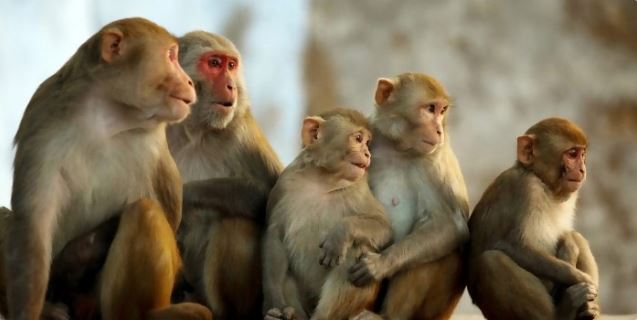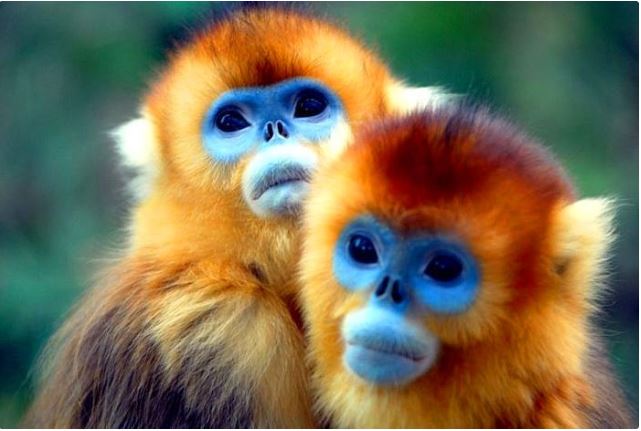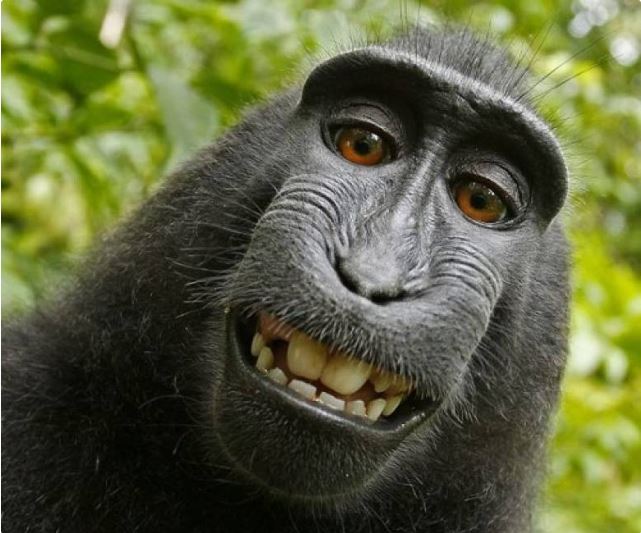Monkeys are considered one of our closest relatives, and most of us believe we know a lot about our cousins. However, the following facts may surprise you about these intelligent, lively animals.
1. The origin of the word “monkey” is unclear. It may come from “Moneke”, the name of Martin Ape’s son in a medieval animal story. It is also related to dwarfs, from the Dutch “Manneken”.
2. There are currently 264 species of monkeys.
3. Monkeys can be divided into two groups, the Old World monkeys that live in Africa and Asia, and the New World monkeys that live in South America.
4. A baboon is an Old World monkey, while a small monkey is a New World monkey.
5. Some monkeys live on the ground, while others live in trees. Different monkey species eat foods such as fruits, insects, flowers, leaves, and reptiles.
6. Most monkeys have tails.
7. The smallest monkey in the world is the macaque with adult males weighing between 120 and 140 grams. While the largest monkey in the world is the adult male macaque weighing up to 35 kg.
8. Capuchin monkeys are considered to be one of the most intelligent New World monkeys. They are capable of using tools, learning new skills, and exhibit various signs of self-awareness.
9. Monkeys understand the meaning of favoritism. They also know how to weigh things better than others, but are not influenced by social and economic standards.
10. To communicate, monkeys use facial expressions, sounds, and body movements.
11. The brain structure of monkeys and humans is similar. New research has revealed that the human brain has many similarities to that of monkeys. The monkey brain is also used to control language and complex thoughts, the way our brains process problems is the same.
12. Monkeys show sympathy and affection to each other by grooming each other.
13. Trees, grasslands, mountains, forests, and high plains are the most common places where monkeys live.
14. Monkeys carry hepatitis, tuberculosis, and herpes B virus.
11. Most monkeys eat both plants and animals, some monkeys also eat dirt.
12. New World monkeys have 36 teeth, while Old World monkeys have 32 teeth.
14. South American Titi monkeys are monogamous. They become distressed when one of them dies. They show affection by kissing, cuddling, holding hands, and grooming each other.
15. The loudest monkeys are the howler monkeys, whose calls can be heard for about three miles in open areas and two miles in forests. They spend 80% of their time resting.
16. Monkey language is as complex as human language. A new study has shown that monkey language is more complex than we thought. Monkey language is similar to human language, and has many variations. Monkeys can use simple sounds to create complex sentences.
17. Red Colobus and Olive Colobus monkeys are hunted for food by humans and even chimpanzees.
18. Squirrel monkeys can make more than 20 different sounds
19. By urinating on subordinates, South African monkeys assert their dominance.
20. The proboscis monkey was voted the ugliest animal on the planet, ranking third. With a belly as big as a basin, it has a stomach divided into many compartments, each containing a different type of enzyme to digest food. Because leaves do not have many nutrients, the monkey spends all day picking leaves to fill its multi-compartment stomach, which makes its belly even bigger.
21. The huge nose, up to 18 cm long, is the tool that proboscis monkeys use to flirt with females. Thanks to this nose, proboscis monkeys can make sounds that can be heard hundreds of miles away.
22. New World monkeys, without thumbs, include spider monkeys and squirrel monkeys.
23. There were 81 species of New World monkeys in the Amazon River basin in 2008, but new species continue to be discovered.
24. Old World monkeys have large cheek pouches, which help them eat quickly and store food for later swallowing.
25. 96 is the number of monkey species in the Old World.
26. Monkeys do not eat banana peels.
27. Monkeys are easily distinguished from apes. Monkeys have tails, apes do not.
28. Spider monkeys have unusual tails, which can support the weight of their entire body.
29. Don’t try to touch a monkey, they don’t like it and may attack you.
30. Monkeys are intelligent animals with an IQ of 174.
31. They share the same origin as humans. Previously, there were many views that monkeys were the ancestors of humans. This view has caused much controversy in both scientific and religious circles. But now, scientists have reaffirmed that monkeys and humans have a common origin and are both primates. Among them, chimpanzees – considered to be the most similar to humans – appeared with the Old World monkey family 25 million years ago.
32. Monkeys are a “great tonic” food! In East Asian countries, monkey meat is considered a “great tonic” food that helps strengthen yang and replenish blood. In Oriental medicine, doctors also use monkey bones to cook medicine to treat many diseases, but today the true effects of monkey meat are still a controversial topic in medicine.
33. Monkeys are powerful assistants to humans. In Thailand, people in Surat Thani province, a coastal province, have created a very unique way to harvest coconuts. They train monkeys to do this job. Monkeys are taught very carefully how to avoid ropes and how to recognize ripe fruits.
34. Monkeys are worshiped as “Monkey Gods”. In Indian religious culture, there is a famous monkey god named Hanuman, whose weapon is a mace, a symbol of courage. The monkey god Hanuman is the central character in two of India’s great and famous epics, the Ramayana and the Mahabharata.
35. Copyright battle over a monkey’s “selfie”. The website Wikimedia has rejected a photographer’s request to remove a photo he claimed was used online without permission, on the grounds that the photo is copyrighted to a monkey.
36. Bononos are often referred to as “sexually promiscuous gorillas”. In this species, females use sex for many purposes: to relieve stress, resolve conflicts and even form alliances between females against males.
37. The snub-nosed monkey in Myanmar has the smallest population. This monkey species is very good at predicting rainstorms, because they tend to… sneeze when they inhale rainwater. However, this also happens often because their flat noses are… upturned.
38. The monkey, officially known as Presbytis hosei canicrus, is listed as endangered by the International Union for Conservation of Nature due to habitat loss from agricultural development, mining, forest fires, and over-hunting. It is believed to live only in the forests of northeastern Borneo, bordering the Indonesian island of Java.
39. Monkeys can remember facial recognition. Studies have shown that humans and monkeys are both capable of facial recognition. Monkeys use holistic processes to recognize a face.
40. Monkeys can recall memories. Studies have shown that monkeys have the same ability to recall memories as humans. Scientists have tested monkeys and concluded that monkeys have memories comparable to those of humans.
41. Monkeys or snow monkeys in northern Japan have thick fur to keep them warm and live near hot springs. The status of the snow monkey tribe is determined by the position and order in which the monkeys sit when soaking in the hot springs.
42. Tarsier monkeys are nocturnal animals with large eyes, almost the same size as their brains, which allows them to see everything at night.
43. Golden monkeys are very cunning and are a real danger to us. These animals have invaded villages in India, broken into houses to steal food and climbed tall buildings to escape.
44. Capuchin monkeys are very cautious and intelligent. Capuchin monkeys use different sounds to identify predators. Some organizations train capuchins to help treat infants and people with severe spinal cord injuries or mobility problems. Capuchins are skilled in using tools and are quite agile, using branches to poke into crevices to get food, cracking hard nuts with rocks, and removing hairs and spines from caterpillars by rubbing them against a branch.





